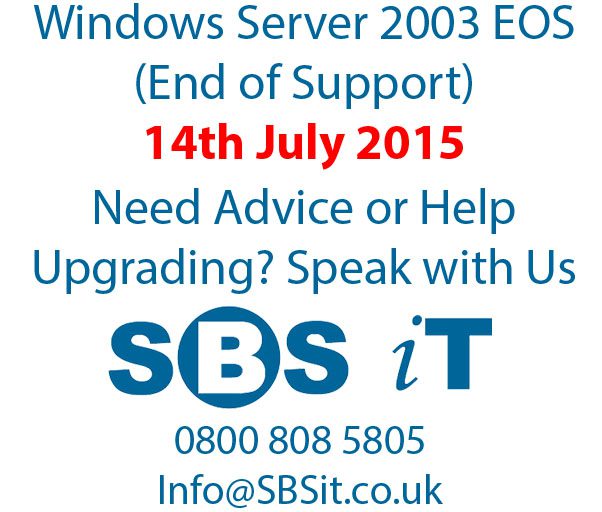In less than a month Windows server 2003 will no longer receive any support updates and will be classed end of life.
This means that as of 14th July 2015 any vulnerabilities in the Operating System software will not be fixed by Microsoft. Depending on who you talk to it could be the end of the world or as irrelevant as Y2K – might be showing my age here.
So what are the options?
Stay as you are and apply all the latest patches – This is not recommended but you might not have the luxury of upgrading to shiny new hardware or moving to the cloud. Make sure you get good security in place and remove any 2003 servers from internet facing services. This will most likely be the weakest part of your network and fixing a breach or clearing up viruses could be more costly than upgrading.
Some will take the risk.
Upgrade to a new server version – Server 2012 R2 is the latest version and is much more secure, if you require like for like services this is probably your best option. Expect to purchase new hardware as well to accommodate the new Operating System. Note there is no Small Business Server edition anymore, you can still run most services in house but requires a bit more work to deploy.
Migrate to the Cloud – move services like email and file sharing to cloud services should your internet connection be fast enough. If you run 3rd party software on your server, there might be a cloud offering as well. Moving to cloud services means you’re always on the current supported version and new features/upgrades are usually free!
What is this cloud thing?
Cloud has been a buzz word around the internet for quite a while now and businesses have been using it in production environments over the last few years, but cloud services have been available for far longer than that. Used Gmail or Hotmail/Outlook.com? Then you’re using a cloud based service.
Unless you’re running your own private cloud you don’t own the infrastructure or hardware, you consume the resources they provide for a fee, this enables you access to scalability beyond anything you could do yourself.
Cloud is about business agility and on demand compute, the more agile you are the quicker you can respond to market change.

